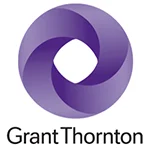 |
| Sean Mogle |
Social distancing has transformed many industries but has been especially challenging for relationship-driven professions like public relations. Sustaining a corporate reputation depends, to a large extent, on engaging diverse tiers of stakeholders, both internal and external. The advent of social media and related digital engagement platforms have prepared us somewhat for virtual contact with stakeholders, but nothing could have effectively prepared us for the sudden and complete suspension of face-to-face contact and physical proximity.
So, what are reputation managers and communicators to do in this strange, complex new world?
Keeping it in-house
When it comes to building and maintaining corporate reputation, employees remain one of the most critical pieces of the puzzle. Their proximity to and interest in the organization make them especially receptive to the company narrative. Plus, they’re active transmitters of this narrative, be it good or bad. It’s no secret that employees talk, both to each other and outsiders. Keeping staffers apprised with communications that are accurate, unfiltered and on-message, therefore, is the best way to ensure the story that gets told aligns with the company’s reputational goals.
| This article is featured in O'Dwyer's Aug. '20 Financial PR/IR & Professional Services PR Magazine. |
This was no easy task even before the pandemic. Fast forward to today, where many companies are scrambling to keep a remote workforce engaged and informed about crucial details related to financial performance, return-to-work plans, HR matters and other key issues. It’s easy to see how message distortion—and ensuing reputational damage—can take place when communications to frazzled, homebound employees are otherwise uneven or inconsistent. Now more than ever, organizations need to pay special attention to how they communicate with employees. For some companies, this may involve making a leap into new tactics, technologies and channels. This may be an uncomfortable transition for some, but it’s a necessary one.
Communicate often, make it personal
There’s no shortage of information related to this unprecedented crisis. Headlines stream across our screens and our newsfeeds are brimming with news and opinions—some accurate, some not. Added to the vacuum of social isolation, it’s a ripe breeding ground for rumor and hearsay. Companies need to deliver messages to their employees before the news cycle does it for them. A more frequent cadence of communications may be needed to reach employees where they are, and in real-time. The all-company e-mail is giving way to faster, more interactive modes of employee outreach such as in-app and intranet-based communications, CEO-led podcasts and videos, webinars, employee Q&As and surveys that allow staff to deliver feedback and voice concerns. Above all, these communications should feel personalized with a human voice.
Managing the media
While the media landscape has evolved significantly in recent years, embracing new technologies and subscription models, the financial and business media remain an integral forum for conveying the corporate story and elevating reputation. Like many industries, financial journalists are doing their best to remain productive while filing from remote locations. Fielding pitches and cultivating relationships with experts while competing with daily deadline pressures has led many journalists to reconsider how they gather source material. Many are relying more heavily on platforms like HARO and Profnet, for example, while others are inviting pitches via Twitter or pulling directly from published thought leadership content. This isn’t to say there are no longer opportunities to build meaningful and lasting relationships with press in the current environment, but storytellers must get more creative in order to do so. LinkedIn and other social media will need to play a greater part of any ongoing press campaigns. Deskside briefings and in-person media tours may be off the table, but Zoom briefings and satellite media tours are still very much in play. No matter the chosen tactic, communications professionals need to ensure that all journalist contact is targeted, strategic, and tailored to a specialized beat or area of interest.
Notes on broadcast
For many organizations, TV, video and broadcast coverage remains a highly desired and effective way to disseminate the company story and showcase the depth of expertise. It goes without saying that things have become a bit more complicated in light of current circumstances. On the network side, producers, bookers and anchors are stretched even thinner than usual, valiantly filling the demand for 24/7 content while dealing with in-studio capacity restrictions, guest connectivity issues and ever-shifting editorial priorities. Many are doing so remotely and are less receptive to working with new guests and communications professionals. In the world of live broadcast, guests with long-standing relationships, instant name recognition and a high-quality Zoom or in-house studio tend to have the advantage. Companies seeking to tell their story via this channel can boost their chances by having a compelling story relating directly to the news of the day and by ensuring that technical standards are up-to-par. What’s more, the broadcast world is exceptionally wide, and there’s an abundance of opportunities beyond the major networks. Formerly “online” outlets like Yahoo! Finance and others have built out their live streaming platforms and have a greater ongoing need for company news and expert insights.
The stay-at-home reality has also contributed to a resurgence of podcast and radio. According to recent data from Nielsen, audio engagement and light listenership rates are growing at a tremendous pace and expected to double by 2023. This presents a valuable tactical opportunity for organizations looking to use this medium to tell their story, whether via a branded, company-sponsored podcast or one hosted by an existing media or news outlet.
The road ahead
While no one could’ve predicted the extent of this disruption on our relationship-driven profession, all is not lost. The demand for meaningful, authoritative communication has never been greater as isolated audiences look to trusted brands for guidance and support. For those of us on the communications side, the pandemic has forced us to get creative and finally incorporate new tactics, tools and technologies into our arsenal. The irony is that in a world where face-to-face contact has been largely deferred, virtual techniques promise to bring us closer to our constituents—and tell our stories more thoroughly—than ever before. Though we can’t be sure what the new normal will look like, we’ll certainly emerge from the crisis as better storytellers, and more experienced communicators with a wider array of skills at our fingertips.
***
Sean Mogle is vice president in Finn Partners’ global financial services practice.


 Teneo is handling the initial public offering of CVC Capital Partners, one of Europe’s largest private equity firms with nearly $200B in assets under management.
Teneo is handling the initial public offering of CVC Capital Partners, one of Europe’s largest private equity firms with nearly $200B in assets under management. Brunswick Group represents Endeavor Group Holdings as it agrees to go private via its acquisition by Silver Lake technology investment firm, which is handled by Edelman Smithfield.
Brunswick Group represents Endeavor Group Holdings as it agrees to go private via its acquisition by Silver Lake technology investment firm, which is handled by Edelman Smithfield. Tod Donhauser, a nine-year veteran of Edelman, has joined H/Advisors Abernathy as managing director and head of its San Francisco office.
Tod Donhauser, a nine-year veteran of Edelman, has joined H/Advisors Abernathy as managing director and head of its San Francisco office. Intelligent Group Ltd, a Hong Kong-based financial PR firm, has priced its initial public offering of 1.9M shares at $4, which is the low end of the $4 to $5 range.
Intelligent Group Ltd, a Hong Kong-based financial PR firm, has priced its initial public offering of 1.9M shares at $4, which is the low end of the $4 to $5 range. Kekst CNC represents Grant Thornton as it sells a majority stake in its US arm to New Mountain Capital, which relies on Goldin Solutions, in what is billed as the largest PE investment in the accounting and advisory sector.
Kekst CNC represents Grant Thornton as it sells a majority stake in its US arm to New Mountain Capital, which relies on Goldin Solutions, in what is billed as the largest PE investment in the accounting and advisory sector.


 Have a comment? Send it to
Have a comment? Send it to 
No comments have been submitted for this story yet.